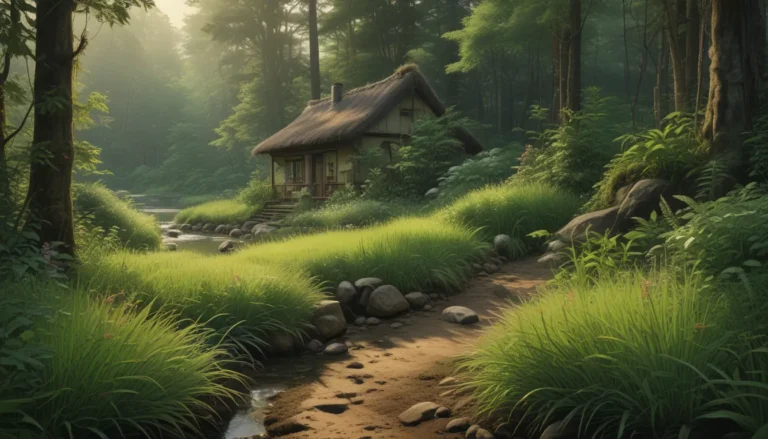A Deep Dive into the World of Goldenrods: 9 Different Types to Consider for Your Garden

Goldenrods are truly a sight to behold as the late-season wildflowers bring forth big sprays of gorgeous golden blooms that not only please the eyes but also serve as essential food sources for birds and pollinators. With a vast array of over 120 different species, there is a goldenrod well-suited for nearly every growing situation, whether it be wet or dry conditions, full sun or shade, sprawling meadows or compact gardens.
In this expansive article, we will delve into the details of nine different species of goldenrods. This will include information on their sun, soil, and water requirements, their growth habits, flowers, foliage, bloom times, and hardiness zones. By the end of this article, armed with this knowledge, you should be able to confidently select one or even two goldenrods that will thrive perfectly in your landscape.
A Closer Look at Our Nine Goldenrod Gems
- Blue-Stemmed
- Canada
- Gray
- Ohio
- Prairie
- Rocky Mountain
- Rough
- Showy
- Stiff
Before we deep dive into each of these species, it’s worth mentioning that if you are looking for tips on growing these wildflowers, you can refer to our guide to growing goldenrods in the landscape. This guide will introduce you to recommended Solidago cultivars as well.
1. Blue-Stemmed
The blue-stemmed goldenrod is native to eastern North America, spanning from Quebec to Texas. Known scientifically as S. caesia, this species, also called “blue stem goldenrod” or “wreath goldenrod,” can be found in clearings, meadows, woodlands, and wood edges. The delicately arching inflorescences are adorned with sulfur-yellow flowers that bloom from late summer through fall. The plant’s leaves are green, lance-shaped, and smooth, with serrated leaf margins. Thriving in USDA Hardiness Zones 4 to 9, this species reaches one to three feet tall with a clumping growth habit.
2. Canada
Canada goldenrod is a widespread species native to most of North America, flourishing in prairies, woods, and riparian areas. With pyramidal flower clusters and hairy stems, this species is known for its vigorous growth. It spreads aggressively through rhizomes and thrives in Zones 3 through 9.
3. Gray
Gray goldenrod or S. nemoralis is native to Southern Canada and the eastern United States. This species is known for its one-sided yellow flowers and gray-hairy stems. It has a broad native range and is hardy from Zones 2 through 9.
4. Ohio
Ohio goldenrod or S. ohioensis is found in the Great Lakes region, particularly in wet zones such as shores and bogs. With large clusters of yellow flowers, it thrives in Zones 3 to 9 in full sun or part shade.
5. Prairie
Prairie goldenrod or S. ptarmicoides is a unique species with flat clusters of white and yellow flowers, thriving in dry prairies. It reaches one to two feet tall and is hardy from Zones 3a to 8a.
6. Rocky Mountain
Rocky Mountain goldenrod or S. multiradiata is a low-growing species adapted to mountain meadows and tundra. With golden flowers and green leaves, it is ideal for Zones 4 to 9.
7. Rough
Rough goldenrod or S. rugosa is native to wetland areas and coastal plains, known for its yellow blooms in arching panicles. It grows from two to eight feet tall, thriving in Zones 3 to 9.
8. Showy
Showy goldenrod or S. speciosa is an impressive species with dense flower sprays, perfect for prairies and wood edges. It reaches two to six feet tall and grows in Zones 3 to 9.
9. Stiff
Stiff goldenrod or S. rigida has a vast distribution from Ontario to Georgia and west to Montana. This species thrives in dry habitats such as prairies, with yellow or gold blooms lasting from late summer to autumn. It grows from one to five feet tall and spreads slowly through rhizomes.
Selecting Your Perfect Goldenrod Companion
After exploring these nine different goldenrod species, you are now equipped to choose the ideal one for your landscape. Each species has its unique characteristics and requirements, making them suitable for various growing conditions.
So, which Solidago are you going to welcome into your garden? Are there any other favorites you have in mind that we didn’t feature on our list? Share your thoughts in the comments below.
And if you’re still in the wildflower zone, why not explore these related articles next:
- Royal Treatment: 15 of the Best Types of Milkweed for Monarch Butterflies
- Native Blue Wildflowers for the Garden
- Purple Aster Varieties You Don’t Want to Miss
Let the golden hues of these majestic wildflowers brighten up your garden!
Remember, at times when selecting products like seeds or live plants mentioned in this article, it is advisable to check with reputable sellers like Everwilde Farms or Nature Hills Nursery. This ensures you receive quality products to enhance your garden landscape.
Final Thoughts
Goldenrods are not only visually stunning but also vital for the ecosystem, serving as a food source for various wildlife. By including these golden blooms in your landscape, you are not only enhancing its beauty but also contributing to the well-being of birds and pollinators.
So, go ahead, explore the diverse world of goldenrods, and find that perfect companion for your garden. Happy gardening!





